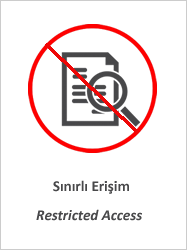Differential diagnosis of glioblastoma and solitary brain metastasis – the success of artificial intelligence models created with radiomics data obtained by automatic segmentation from conventional MRI sequences

Göster/
Erişim
info:eu-repo/semantics/closedAccessTarih
2021Yazar
Demirel, EminÖzer Gökaslan, Çiğdem
Dilek, Okan
Özdemir, Çiğdem
Boyacı, Mehmet Gazi
Korkmaz, Serhat
Üst veri
Tüm öğe kaydını gösterKünye
Demirel, E., Gokaslan, C. O., Dilek, O., Ozdemir, C., Boyaci, M. G., & Korkmaz, S. (2021). Differential dia gnosis of glioblastoma and solitary brain metastasis-the success of artificial intelligence models created with radiomics data obtained by automatic segmentation from conventional MRI sequences. CESKA A SLOVENSKA NEUROLOGIE A NEUROCHIRURGIE, 84(6), 541-546.Özet
Aim: Our study aimed to distinguish glioblastoma (GBM) from solitary brain metastasis with machine models developed with radiomics data obtained by artificial intelligence-based automatic tumour segmentation over conventional MRI of the patients. Methods: Our study was conducted as single-centre and retrospective. Thirty-five GBM and 25 solitary brain metastasis patients who had pre-operative contrast-enhanced brain MRI were included in the study. T1-weighted, postcontrast T1-weighted, T2-weighted and fluid attenuated inversion recovery (FLAIR) T2-weighted images of the patients were uploaded to the program named BraTumIA. With the program, the patient‘s lesions were divided into four different segments by artificial intelligence as necrosis, non-enhancing solid area, enhancing solid area and peritumorous oedema. 856 features were extracted from T1 post-contrast and T2 FLAIR images. A nested approach was used for feature selection, model optimization and validation. Artificial neural networks, support vector machine, random forest and naive bayes were modelled. Accuracy, sensitivity, specificity and area under the curve (AUC) parameters were used to evaluate the model performance. Results: There was no difference between GBM and metastasis groups in terms of age and gender. The most successful results were obtained in the neural network algorithm; 0.970 AUC was found. Other support vector machine, naive bayes, logistic regression and random forest algorithms also found 0.959, 0.955, 0.955, 0.917 AUC values, respectively. Conclusion: In the differential diagnosis of GBM and solitary brain metastasis, radiomics-based artificial intelligence models obtained by automatic segmentation can distinguish objectively and with high accuracy by keeping device and person dependency at the lowest level with only conventional sequences.















